Did you know that there are hundreds of different varieties of peppers available? That’s right, the world of peppers is vast and diverse, offering a wide range of flavors, heat levels, and culinary uses. From mild and sweet to fiery hot, peppers add a unique and exciting dimension to countless dishes. In this article, we will delve into the fascinating world of peppers and explore some of the most popular types that I absolutely love.
Key Takeaways:
- There are hundreds of different varieties of peppers to choose from.
- Peppers come in various flavors, heat levels, and culinary uses.
- Exploring different types of peppers can add excitement and depth to your dishes.
- From mild and sweet to fiery hot, there is a pepper for every taste preference.
- Stay tuned to discover the diverse world of peppers and how to incorporate them into your cooking.
Understanding Different Types of Peppers
Peppers, belonging to the Capsicum genus, offer a diverse array of flavors, heat levels, and culinary uses. These versatile fruits come in various shapes, sizes, and colors, making them a vibrant addition to any dish. From mild and sweet bell peppers to fiery hot varieties, each type of pepper brings its own unique characteristics to the table.
In terms of spiciness, peppers span the entire spectrum. Some are mild and pleasant, while others pack a powerful punch. Understanding the different levels of spiciness is crucial when incorporating peppers into your recipes, as it allows you to balance flavors and create well-rounded dishes.
Peppers are used in a wide range of culinary creations. From fresh salads and comforting soups to zesty salsas and fiery hot sauces, peppers add depth and complexity to various cuisines around the world. They can be grilled, roasted, sautéed, or eaten raw, depending on their intended use in a particular recipe.
When it comes to choosing peppers for your cooking endeavors, consider the shape, size, and color of the pepper, as they can affect the overall appearance and presentation of your dishes. Some peppers are long and thin, perfect for stuffing or slicing into elegant strips. Others are round or blocky, ideal for dicing or adding a pop of color to your meals.
Pepper Characteristics at a Glance:
- Shape: Peppers can be long and thin or round and blocky.
- Size: They range from small cherry peppers to large bell peppers.
- Color: Peppers come in a variety of hues such as green, red, yellow, orange, and even purple.
- Spiciness Level: Peppers can range from mild to extremely hot, each with a distinct heat profile.
- Culinary Uses: Peppers are utilized in salads, soups, salsas, hot sauces, and various other culinary creations.
Aleppo Peppers
When it comes to adding a burst of flavor to Middle Eastern and Mediterranean cuisines, Aleppo peppers are a go-to ingredient. Also known as Halaby peppers, these peppers are known for their distinctive fruity and earthy flavor profile.
Aleppo peppers have a moderate level of spiciness, making them accessible to a wide range of palates. They add depth and complexity to dishes without overpowering the overall flavor. With a Scoville Heat Units rating of 10,000 to 30,000, they provide a pleasant kick without excessive heat.
The versatility of Aleppo peppers shines through in a variety of dishes. From roasted meats and stews to dips and marinades, these peppers amplify the flavors of many traditional Middle Eastern and Mediterranean recipes.
Curious about the appearance of Aleppo peppers? Take a look at this enticing image:
“Aleppo peppers bring a unique combination of fruity and earthy flavors to the table. Their moderate spiciness and versatility make them a staple in Middle Eastern and Mediterranean cuisines.”
Alma Paprika Peppers
When it comes to adding a touch of sweetness to your dishes, Alma paprika peppers are the perfect choice. These vibrant red peppers are known for their delightful sweet flavor, making them a favorite in many Eastern European cuisines, particularly Hungarian dishes.
Alma paprika peppers are primarily grown in Hungary, where they are carefully dried and ground into a fine powder to create the famous Hungarian paprika. This aromatic spice adds not only vibrant color but also a distinct sweet flavor to dishes.
One classic Hungarian dish that showcases the rich flavor of Alma paprika peppers is traditional goulash. This hearty stew is made with tender chunks of meat, vegetables, and a generous amount of Hungarian paprika, giving it a warm and comforting taste.
The Scoville Heat Units rating of Alma paprika peppers is 0, which means they provide flavor without any spiciness. This makes them suitable for those who prefer milder flavors or who are sensitive to heat.
So the next time you want to elevate the taste of your dishes with a touch of sweetness, reach for Alma paprika peppers and indulge in the authentic flavors of Hungarian cuisine.
Aji Amarillo Peppers
When it comes to adding a burst of vibrant color and fiery flavor to your dishes, look no further than Aji Amarillo peppers. These bright yellow peppers are a staple ingredient in traditional Peruvian cuisine, known for their powerful spicy punch and unique taste.
With their long, thin shape, Aji Amarillo peppers are instantly recognizable. They bring not only heat but also a distinct fruity and floral flavor that is hard to find in other peppers. This combination of spice and flavor makes them an essential component of many beloved Peruvian dishes.
One popular Peruvian dish that showcases the robust flavor of Aji Amarillo peppers is aji de gallina. This creamy chicken stew relies on the peppers for its signature heat and bright color. The peppers are typically pureed and added to the sauce, delivering a spicy kick that elevates the dish to new heights of deliciousness.
“Aji Amarillo peppers are the backbone of Peruvian cuisine. Their bright yellow color adds a vibrant touch to dishes, while their powerful spiciness brings depth and complexity. When you taste the unique flavor of these peppers, you’ll understand why they are so highly prized in Peruvian cooking.” – Maria Quispe, Peruvian Chef
It’s important to note that Aji Amarillo peppers have a Scoville Heat Units rating of 30,000 to 50,000, placing them in the range of medium to hot on the spice scale. This means that while they do have a kick, they are not overpoweringly spicy. It’s the perfect balance for those who enjoy a bit of heat without overwhelming their taste buds.
To give you a better understanding of the spice level, here’s a table comparing the Scoville Heat Units of different types of peppers, including Aji Amarillo:
| Pepper | Scoville Heat Units |
|---|---|
| Aji Amarillo | 30,000-50,000 |
| Anaheim | 500-2,500 |
| Ancho | 1,000-2,000 |
| Ghost Pepper | 800,000-1,000,000 |
As you can see, Aji Amarillo peppers fall somewhere in the middle of the spice scale, making them perfect for those who enjoy a kick of heat without the intense burn. Their bright yellow color also adds a visually stunning element to your dishes, making them as visually appealing as they are delicious.
So why not spice up your culinary adventures with Aji Amarillo peppers? Whether you’re looking to add a punch of heat to your Peruvian dishes or want to experiment with new flavors in your cooking, these vibrant yellow peppers are sure to impress your taste buds and elevate your meals to new heights.
Aji Chombo Peppers
When it comes to intense spiciness, Aji Chombo peppers, also known as Panamanian Hot Peppers, take the crown. These small, fiery red peppers pack a significant punch and are not for the faint of heart. In fact, Aji Chombo peppers have a Scoville Heat Units rating of 50,000 to 100,000, placing them among the hottest peppers in the world.
In Panama, Aji Chombo peppers are a staple ingredient in many traditional dishes, adding a fiery kick to hot sauces, stews, marinades, and more. The intense spiciness of these peppers enhances the flavors of Panamanian cuisine, creating a delightful culinary experience for those who dare to indulge in the heat.
Whether you’re a fan of spicy food or looking to add a fiery kick to your Panamanian dishes, Aji Chombo peppers are the perfect choice. Just remember to handle them with care and use them judiciously, as their intense spiciness can quickly overpower a dish.
The Scoville Heat Scale
The Scoville Heat Units (SHU) is a measurement used to quantify the spiciness or heat level of peppers. A higher SHU rating indicates a hotter pepper. Here’s a comparison of Aji Chombo peppers and other popular peppers on the Scoville Heat Scale:
| Pepper | Scoville Heat Units (SHU) |
|---|---|
| Aji Chombo | 50,000 to 100,000 |
| AJI Amarillo | 30,000 to 50,000 |
| Ancho | 1,000 to 2,000 |
As you can see, Aji Chombo peppers boast an intense spiciness that surpasses many other popular peppers. Their fiery flavor adds a unique kick to Panamanian dishes, making them a must-try for spice enthusiasts and lovers of Panamanian cuisine.
“Aji Chombo peppers bring an intense heat that livens up any dish. They are the secret ingredient in many traditional Panamanian recipes, adding a fiery kick and a burst of flavor. Handle with caution, but don’t miss out on the incredible taste they offer!”
– Juanita Herrera, Panamanian Chef
Anaheim Peppers
I love incorporating Anaheim peppers into my Mexican dishes. These mild chili peppers add a vibrant green color and a subtle heat that enhances the flavors of traditional Mexican cuisine. Whether you’re roasting them to bring out their natural sweetness or stuffing them with savory fillings, Anaheim peppers offer a delicious and versatile option for creating authentic Mexican flavors.
With a Scoville Heat Units rating of 500 to 2,500, Anaheim peppers provide a gentle spiciness that won’t overpower your palate. They are perfect for those who enjoy a little kick without the intense heat of hotter chili peppers.
When it comes to roasting, Anaheim peppers shine. Their mild heat and thin skin make them easy to char and peel, resulting in a smoky and flavorful addition to salsas, tacos, and enchiladas. Roasted Anaheim peppers also pair well with grilled meats, adding a touch of heat to dishes like carne asada or grilled chicken fajitas.
Another popular way to enjoy Anaheim peppers is by stuffing them. Their elongated shape and mild flavor make them ideal for filling with a variety of delicious ingredients, from cheese and spices to ground meat or beans. Baked until tender and melted, stuffed Anaheim peppers make a satisfying and flavorful meal.
If you’re looking to explore the world of Mexican cuisine, don’t miss out on the versatility and mild heat of Anaheim peppers. Whether you’re roasting them or stuffing them, these peppers are sure to add an authentic and delicious touch to your favorite Mexican dishes.
Ancho Peppers
When it comes to Mexican cuisine, ancho peppers are a key ingredient that adds depth and flavor to a variety of dishes. These dried poblano peppers have a distinct smoky flavor with hints of dried fruit, making them a favorite among chefs and home cooks alike. With a mild heat level, ancho peppers provide a gentle kick without overwhelming the taste buds.
One of the most iconic uses of ancho peppers is in mole sauce, a rich and complex Mexican sauce that combines savory, sweet, and spicy flavors. The deep, smoky notes of the ancho peppers perfectly complement the other ingredients in the sauce, creating a harmonious blend of flavors that is unmatched.
In addition to mole sauce, ancho peppers are commonly incorporated into various stews, salsas, and marinades. Their versatility allows them to enhance the taste of meat, poultry, and vegetables, bringing a touch of Mexican authenticity to every bite.
For those who enjoy a deeper understanding of the culinary world, ancho peppers can be compared to the other types of dried peppers in terms of their flavor profiles, heat levels, and culinary uses. Here is a table that summarizes the characteristics of ancho peppers:
| Pepper Type | Flavor | Heat Level | Culinary Uses |
|---|---|---|---|
| Ancho Peppers | Deep, smoky with hints of dried fruit | Mild | Mole sauce, stews, salsas, marinades |
Dried Poblano Peppers
Ancho peppers are dried poblano peppers, which are typically green and mild when fresh. They are left to mature on the plant until they turn deep red, at which point they are harvested and dried. The drying process intensifies their flavors and concentrates the heat level, resulting in the beloved ancho pepper.
Ancho peppers are a testament to the rich and diverse flavors of Mexican cuisine. Their distinctive taste adds a touch of warmth and complexity to every dish, taking your taste buds on a journey through the vibrant world of spices.
Banana Peppers
When it comes to adding a touch of sweetness and mild heat to your meals, look no further than delicious banana peppers. These elongated peppers, also known as yellow wax peppers, are a favorite in salads, sandwiches, pickles, and relishes. With their vibrant color and versatile flavor, banana peppers can elevate any dish.
What sets banana peppers apart is their delightful combination of sweetness and mild spiciness. They offer a gentle kick without overwhelming your taste buds, making them a great choice for those who prefer milder flavors. Whether you’re adding them to salads for a burst of tanginess or layering them in sandwiches for a zesty crunch, banana peppers provide a delightful balance of flavors.
Now, let’s take a closer look at the Scoville Heat Units (SHU) rating of banana peppers. They range from 0 to 500 SHU, indicating their mild spiciness. This low heat level ensures that even those with a low tolerance for spice can enjoy the subtle kick of a banana pepper.
Uses in Culinary
Banana peppers find their way into various culinary creations, adding a touch of brightness and flavor. Here are a few popular uses for banana peppers:
- In Salads: Slice or chop banana peppers to add a pop of color and tanginess to your salads. They pair well with leafy greens, tomatoes, and cucumbers.
- In Sandwiches: Thinly sliced banana peppers provide a refreshing crunch and mild heat to sandwiches, whether you’re making a classic ham and cheese or a veggie-packed sub.
- In Pickles and Relishes: Preserve the unique flavor of banana peppers by pickling them. Their tangy-sweet taste makes them a perfect addition to relishes, salsas, and even antipasto platters.
So the next time you’re looking to incorporate some sweet and mild spiciness into your meals, give banana peppers a try. You’ll love the vibrant flavor they bring to salads, sandwiches, and more.
| Heat Level (Scoville Heat Units) | Common Culinary Uses |
|---|---|
| 0-500 SHU | Salads, sandwiches, pickles, relishes |
Bell Peppers
Bell peppers are the most common and widely used variety of peppers. They come in a variety of colors including green, red, yellow, and orange. Bell peppers are mild and have a sweet flavor. They are used in a variety of culinary dishes, including salads, stir-fries, and roasted vegetable medleys. Bell peppers have a Scoville Heat Units rating of 0.
Black Cobra Peppers
Black Cobra peppers, also known as Naga Jolokia or Ghost peppers, are a fiery addition to Indian cuisine. They are infamous for their extreme heat, boasting a Scoville Heat Units rating ranging from 800,000 to 1,000,000. These peppers are not for the faint of heart, as their intense spiciness can bring tears to your eyes and leave your taste buds burning.
Despite their scorching heat, Black Cobra peppers are highly valued for their unique flavor profile. They offer a combination of fruity and smoky undertones, adding depth and intensity to dishes. In Indian cuisine, these peppers are commonly used in curries, chutneys, and pickles, where their heat is balanced with other bold flavors and ingredients.
Did you know? Black Cobra peppers gained international attention for earning the title of the “world’s hottest chili pepper” in the Guinness World Records in 2007. They held this record until 2012 when the Carolina Reaper officially took the crown with its even hotter spice level.
When handling Black Cobra peppers, it’s important to exercise caution. The intensity of their heat can cause skin irritation and discomfort. It’s recommended to wear gloves or use utensils when working with these peppers to avoid direct contact with your skin or eyes.
Tip: If you want to tame the heat of Black Cobra peppers, try removing the seeds and white pith, which are the hottest parts of the pepper.
For those seeking a culinary adventure and a thrilling heat experience, Black Cobra peppers are the perfect choice. Just remember to use them sparingly and be prepared for an unforgettable spicy sensation!
Black Cobra Pepper Scoville Heat Units Comparison
| Pepper Variety | Scoville Heat Units (SHU) |
|---|---|
| Black Cobra | 800,000-1,000,000 |
| Naga Jolokia (Ghost Pepper) | 855,000-1,041,427 |
| Habanero | 100,000-350,000 |
| Jalapeno | 2,500-8,000 |
| Bell Pepper | 0 |
Conclusion
Peppers are truly a flavor powerhouse in the culinary world. With their wide variety of types, flavors, and heat levels, they offer something for every palate. From the mild and sweet bell peppers to the fiery hot ghost peppers, each type of pepper brings its own unique characteristics to the table.
Exploring the different types of peppers is a delightful adventure that allows you to experiment with a myriad of flavors and spice levels. Whether you’re looking to add a touch of sweetness or a fiery kick to your dishes, peppers have got you covered.
These versatile ingredients have found their way into countless cuisines around the globe. From Mexican salsas and Hungarian goulash to Peruvian specialties and Indian curries, peppers play a pivotal role in creating depth, complexity, and mouthwatering flavors.
So, next time you step into your kitchen, don’t be afraid to reach for a pepper that matches your culinary vision. Embrace the wide array of flavors, heat levels, and culinary uses that peppers offer, and let your creativity run wild. The vibrant world of peppers awaits!

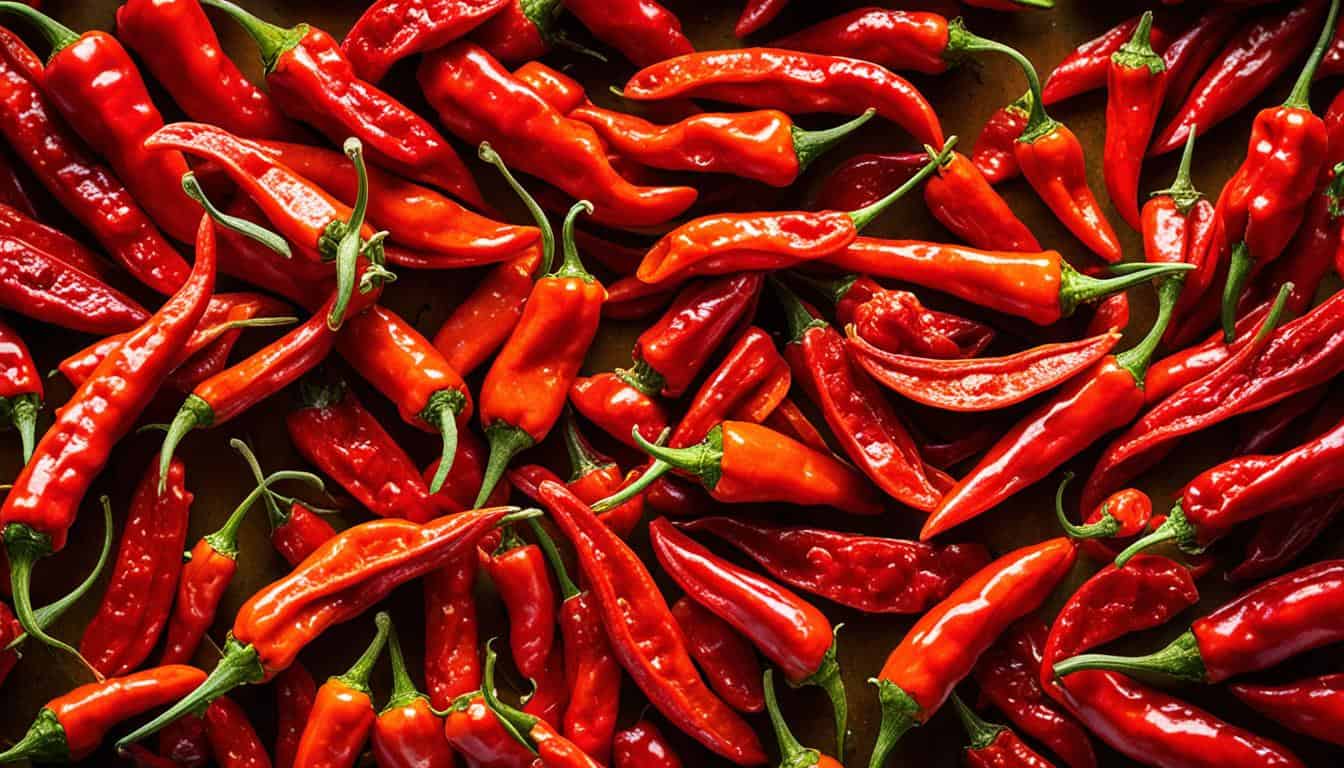
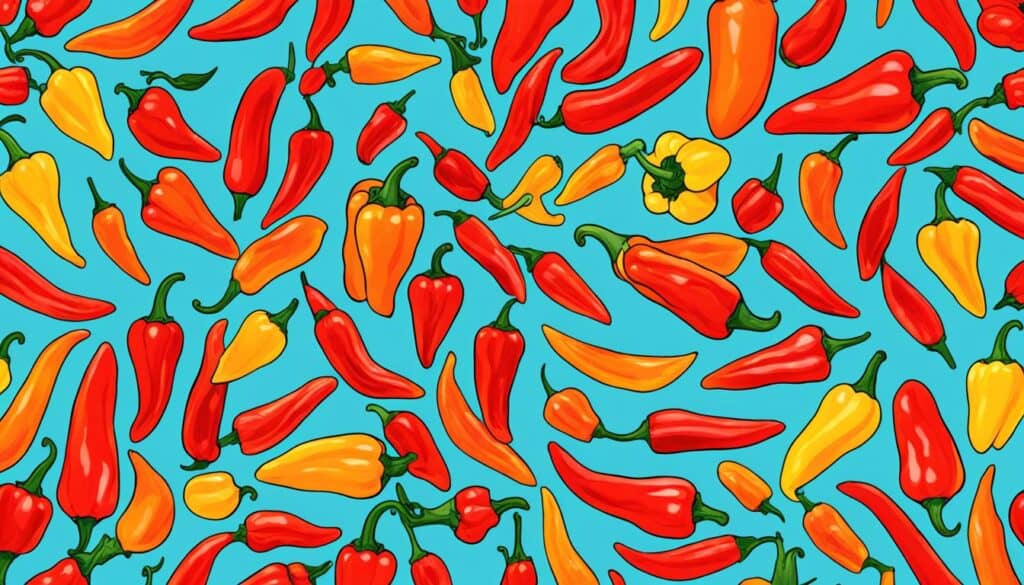
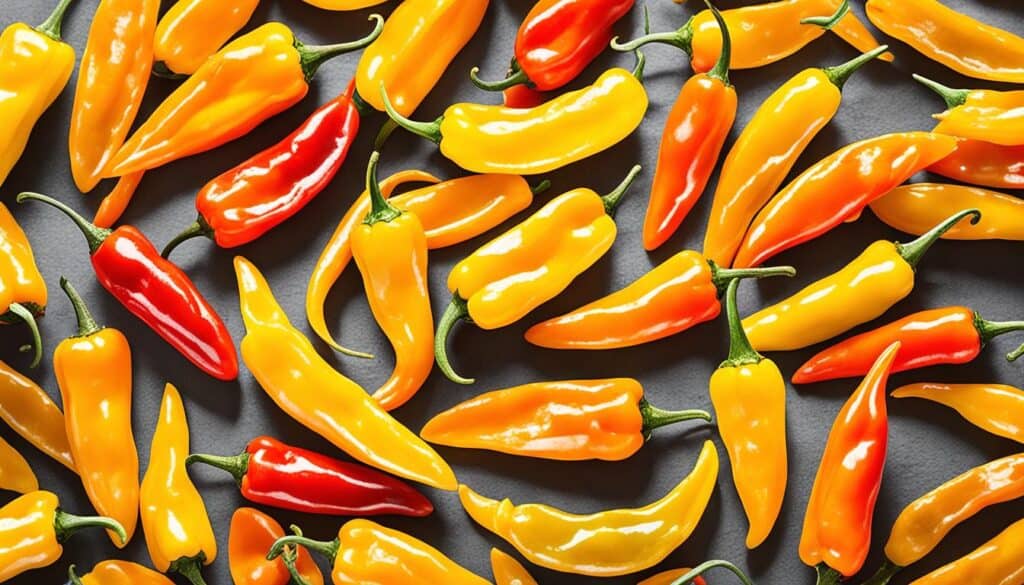
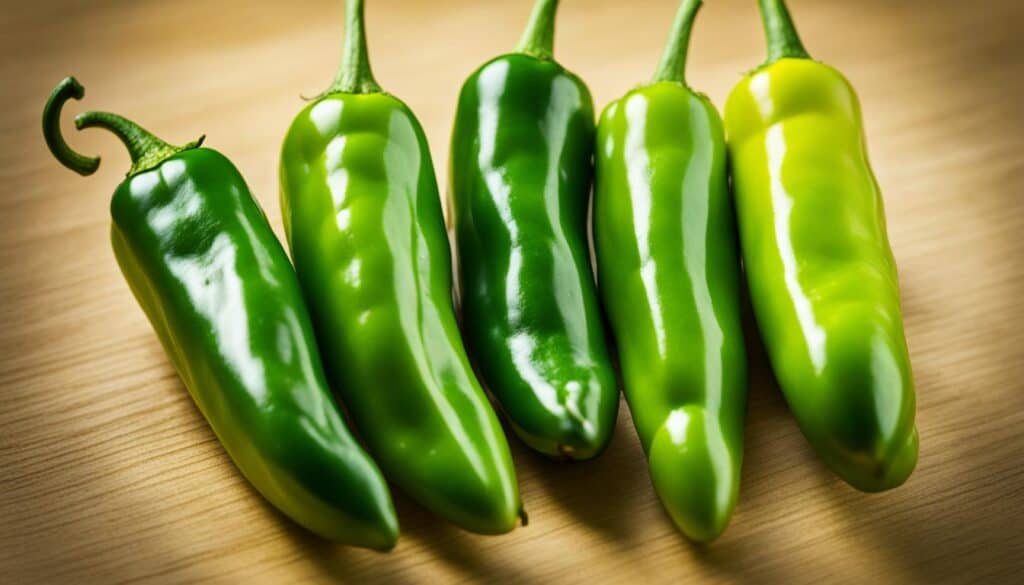

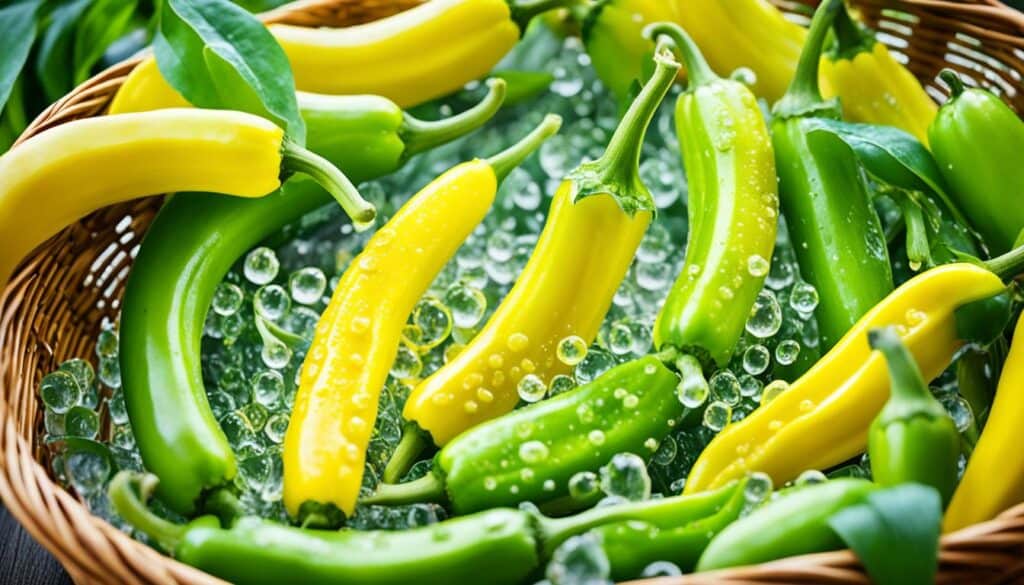



Leave a Reply